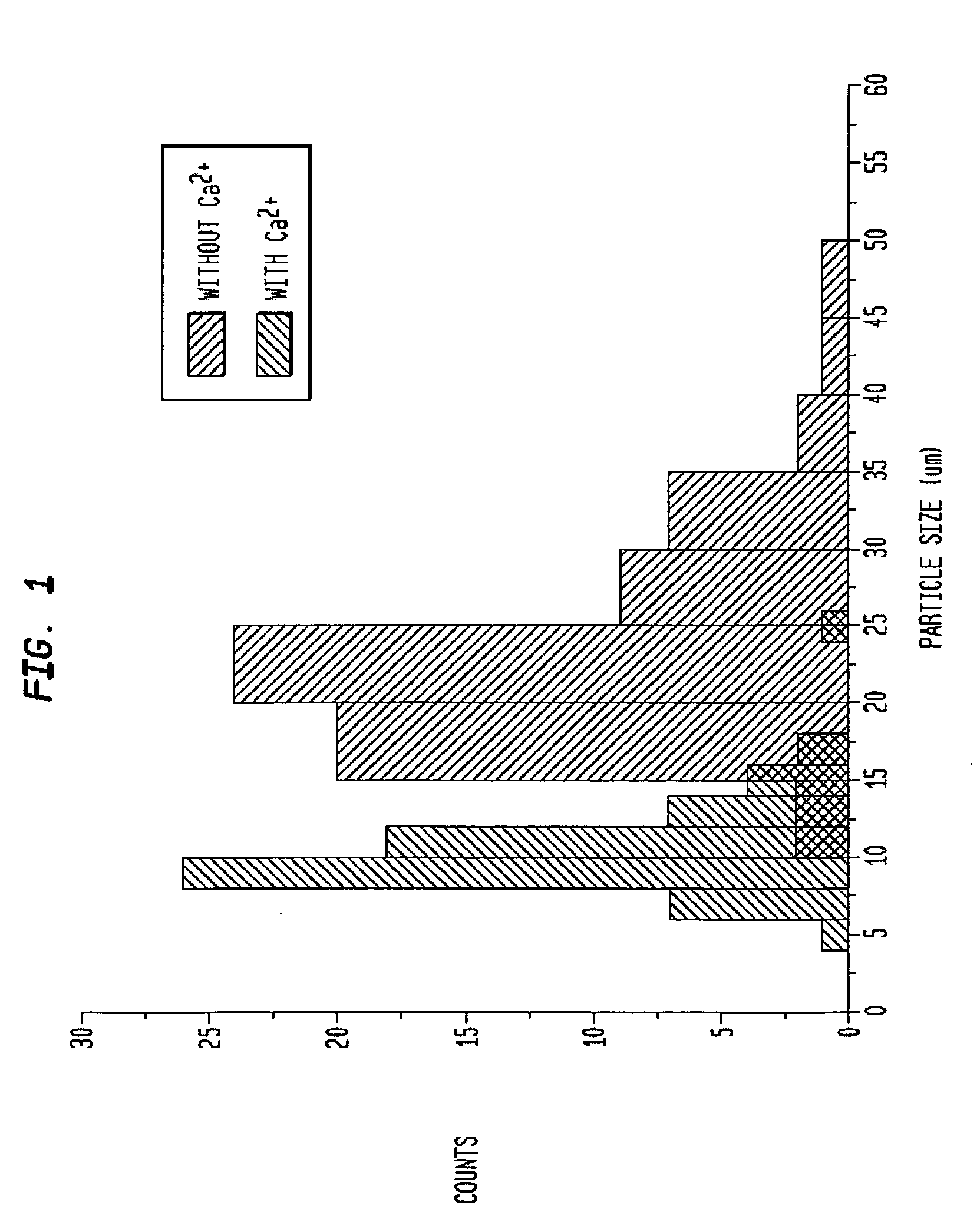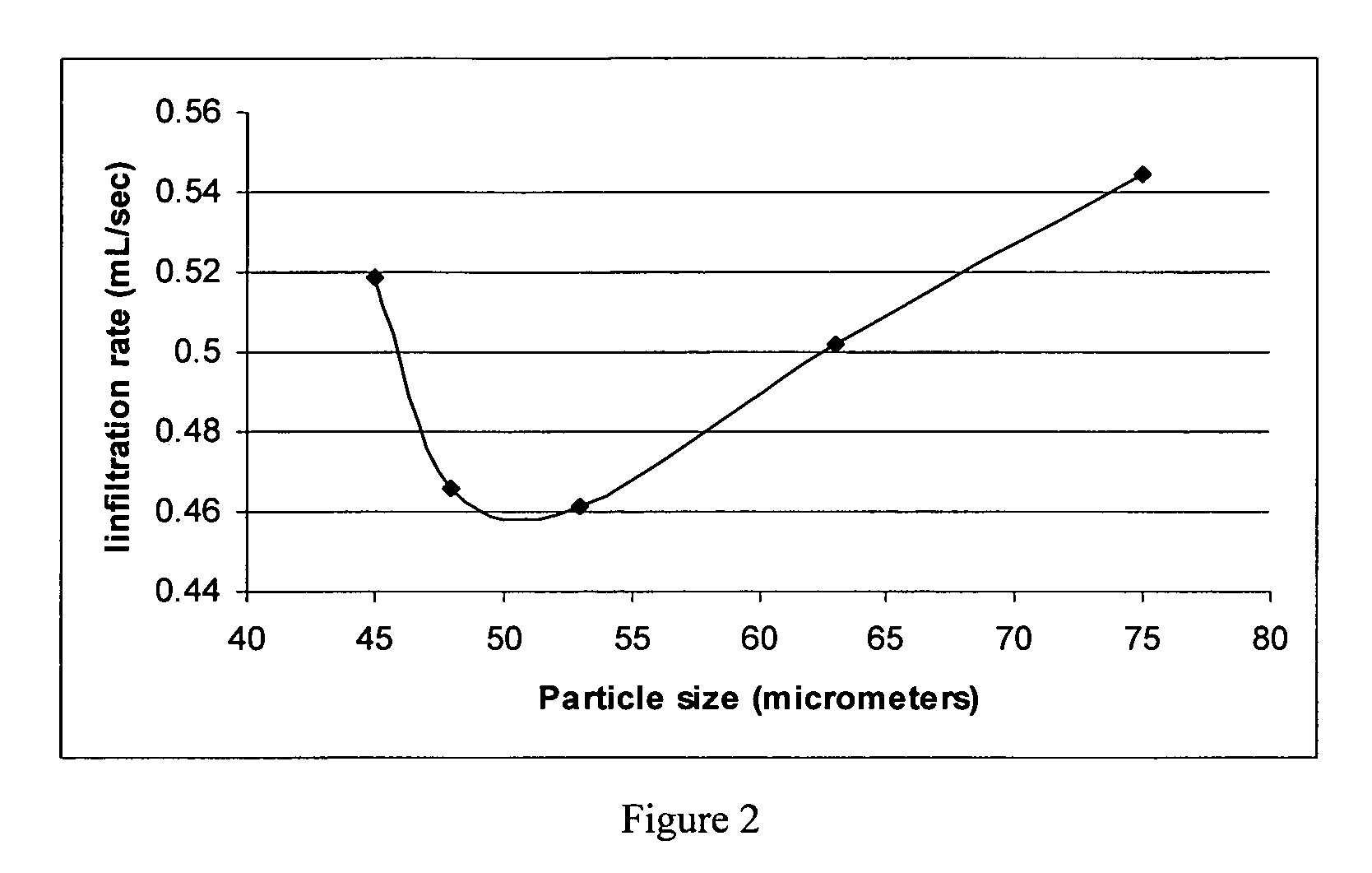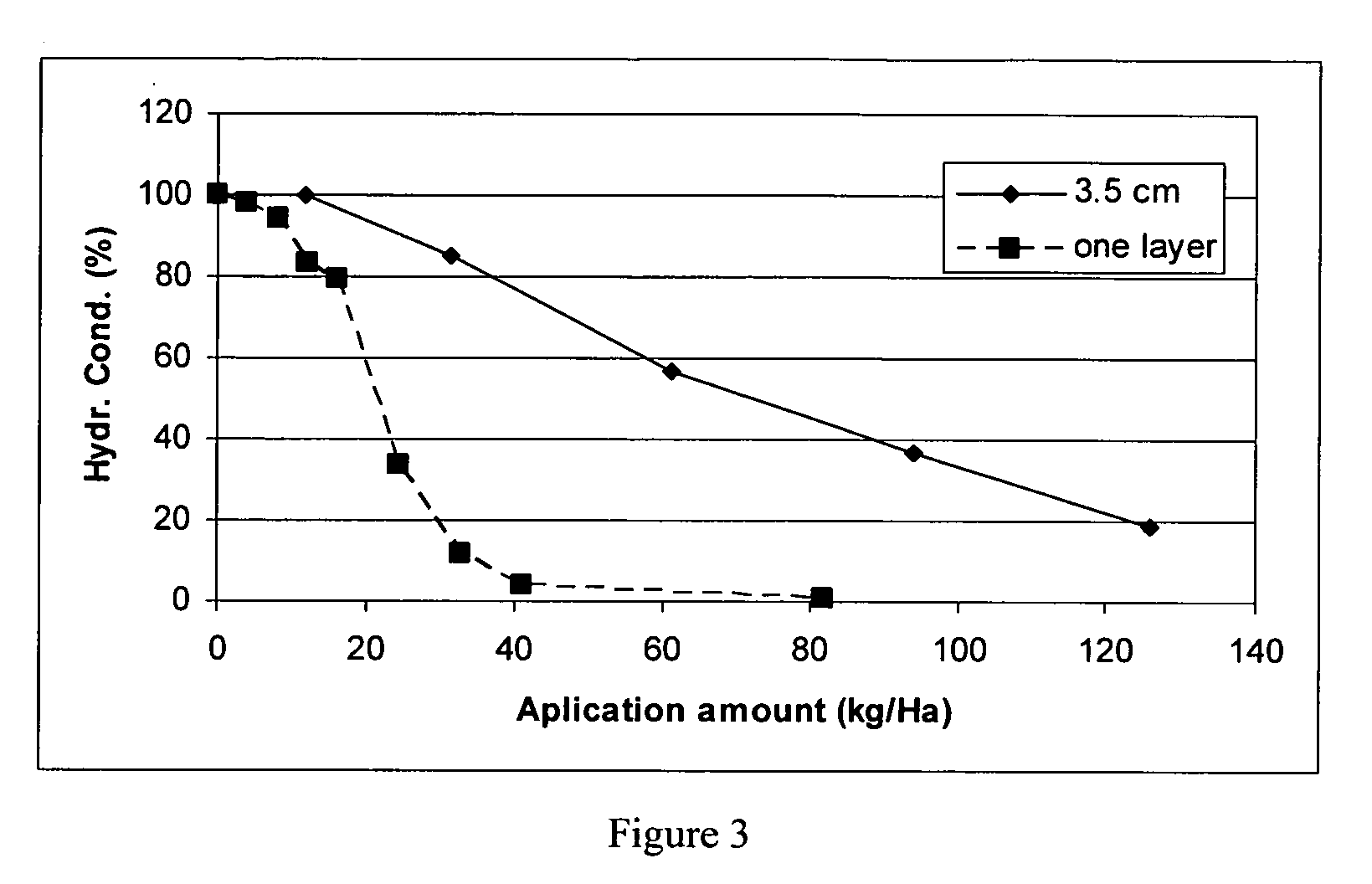Self-situating stimuli-responsive polymer compositions in soil additives and methods for use
a technology of stimuli-responsive polymer composition and soil additive, which is applied in the field of self-situating stimuli-responsive polymer composition in soil additives, can solve the problems of water runoff, major constraint of water scarcity, uneven water distribution, etc., and achieve the effect of high water potential
- Summary
- Abstract
- Description
- Claims
- Application Information
AI Technical Summary
Benefits of technology
Problems solved by technology
Method used
Image
Examples
example 1
[0082]Referring to FIG. 1, hydrogel particles swelling or shrinking under the contact with calcium ion are observed.
[0083]Functionalized starch hydrogels (ca. 0.1 grams) were suspended in de-ionized water (ca. 50 milliliters) and stirred overnight to allow these hydrogels to fully swell. A small portion of the above suspension (ca. 100 microliters) was injected through a syringe into a microfluidic system, which was mounted on an optical microscope and had an observation window in the size of roughly 0.8 cm×4.0 cm. A small amount of calcium chloride solution (1 M, 100 microliters) was injected into the microfluidic system to induce the shrinkage of the hydrogels. The swelling of these shrunk hydrogels was carried out by the following protocol: Flush the microfludic system containing shrunk hydrogels with about 10 milliliter de-ionized water. A small amount of sodium chloride solution (ca. 1 M, 500 microliters) was flushed through the microfluidic system. Images of swollen and shrunk...
example 2
[0084]Referring to FIG. 2, the influence of hydrogel particle size on the clogging efficiency is observed, where it was hypothesized that modification of hydrogel dimension size related to soil pore size can control the clogging efficiency.
[0085]Generally for soil column testing, 250 grams of sand was filled into a column (with or without the present of water). With a gentle tapping, a pre-determined soil packing density (eg. 1.8 g / cm3) was achieved. Water or testing solutions were added to the top of soil column and maintained at a fixed level by Mariotte's bottle to achieve a constant pressure head. The water flow through the column was collected in a container which sat on a balance. The reading was collected and stored in a computer to provide data to calculate flow rate or hydraulic conductivity.
[0086]Stacked sieves with varied mesh sizes were loaded with hydrogel particle powder (ca. 50 grams), and mounted on a shaker. A few hours of shaking operation allowed the separation of...
example 3
[0087]Referring to FIG. 3, the influence of the broadness of hydrogel particle distribution in soil to the clogging efficiency is observed.
[0088]Preparation a soil column with a single layer of hydrogel: Soil column was prepared with about 200 grams of sand as described above. A suspension of swollen hydrogel (varied amount) was added on the top of the soil column and allowed to drain until the solution reached the soil surface. A single layer of hydrogels was created by carefully adding small amount of sand (total sand used: 250 grams) onto the top of the soil column while adding small amount of water to prevent the trapping of air bubbles. (Swollen was large enough not to enter the soil pores.)
[0089]Preparation a soil column with homogeneous mixing of hydrogel and sand: Soil column was prepared with about 125 grams of sand as described above. A suspension of swollen hydrogel (varied amount) was mixed homogeneously with sand (total sand used: 250 grams), and loaded on the top of so...
PUM
| Property | Measurement | Unit |
|---|---|---|
| Depth | aaaaa | aaaaa |
| Height | aaaaa | aaaaa |
| Height | aaaaa | aaaaa |
Abstract
Description
Claims
Application Information
 Login to View More
Login to View More - R&D
- Intellectual Property
- Life Sciences
- Materials
- Tech Scout
- Unparalleled Data Quality
- Higher Quality Content
- 60% Fewer Hallucinations
Browse by: Latest US Patents, China's latest patents, Technical Efficacy Thesaurus, Application Domain, Technology Topic, Popular Technical Reports.
© 2025 PatSnap. All rights reserved.Legal|Privacy policy|Modern Slavery Act Transparency Statement|Sitemap|About US| Contact US: help@patsnap.com



